Animation Block Party (www.animationblock.com) is the premier animation festival of the East Coast. In this interview series, the founder of ABP, Casey Safron will be introducing Animation Magazine readers to some of the award-winning animators who have screened at past ABP festivals.
Animation Block Party has been fortunate enough to have a great friend in animation master, Doug Crane. With a career spanning 50-plus years in the industry, Doug Crane has done it all, from Terrytoons to Beavis and Butt-head. It’s been an honor to have Doug design the past six years of ABP festival posters, and we hope this small taste of his career will give the readers of Animation Magazine a little insight into the profession of a true pioneer.
Casey Safron: Start by telling us a bit about yourself, where you’re from and when you realized you wanted to be animator?
Doug Crane: I’m one of eight Crane kids born into a wonderful family in the little village of Eastchester, 20 miles north of New York City, way back in the 1930s in the midst of the depression. Often, it could be pretty tough trying to get my two cents into a conversation around the dinner table. It dawned on me that I could get my point across and also vent my frustrations by drawing pictures, usually of myself with my cartoon mouth—wide open with balloon blurbs saying stuff like, “Bobby, Shut Up!” or, “Betty, Be Quiet!” Apparently it worked. My doodles were appreciated, and I got to say a few things…at least during dinner…
My junior year at Eastchester High, I applied to the Cartoonists and Illustrators School in New York City, (now known as the School of Visual Arts). C&I was a three-year venture, offering a “Certificate of Completion” upon finishing. I worked my way through those years by driving a local school bus each morning from 6:20 a.m. until 9:00 a.m. For the next three years, on the first Monday of the month, I’d arrive with a tuition check in the amount of $50 dollars. $450 was the yearly tuition. It was quite a bit of money back then!
Being an hour late to class each morning because of my bus-driving chores may sound like somewhat of an obstacle to my receiving a proper education, but it certainly didn’t work that way for me. When Mr. Burne Hogarth finished his lecture, he would come over to me, (the “Late Mr. Crane”) sit beside me, evaluate my homework and guide me through a personal recap of the lesson plan, which he had just presented to the other students! I was told that as long as I kept my grades up and was up to date on my assignments, that they were more than willing to make sure I didn’t miss any classroom lessons. I’ll never forget the generous attention afforded me by my mentors in those days. I’m sure they are the reason that I try so hard to present a continuance of the attitudes I witnessed in them as a young man myself. I consider all of my students to be equal, which is why I respect the fact that each is so uniquely different.
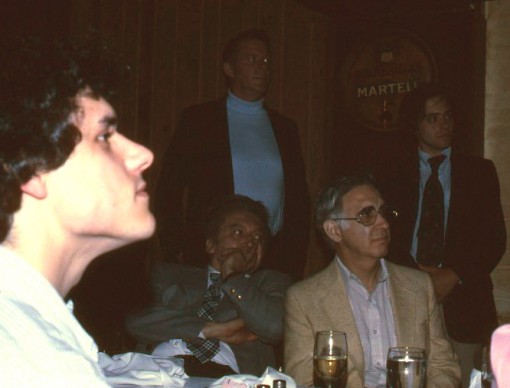
Casey Safron: Sounds like art school prepared you well for your animation career?
Doug Crane: Not really, Casey! Animation was not taught when I was attending. If one desired a career in the animation field, there was no alternative but to go to California…Cal Arts…and hope to eventually be called to Disney’s.
But that wasn’t in my plans. My intention was that I would eventually become an illustrator, a comic strip artist or a “single-panel gag cartoonist.” I graduated in May of 1956, with a hard-earned Certification of Cartooning and Illustration in hand. Well, I found myself in a depressed period when magazines and newspapers were experiencing a severe drop in circulation. The Saturday Evening Post folded, Colliers gave up. Literally dozens of magazines bit the dust. “Print” cartoonists were not exactly in demand, and the competition among survivors was tremendous.
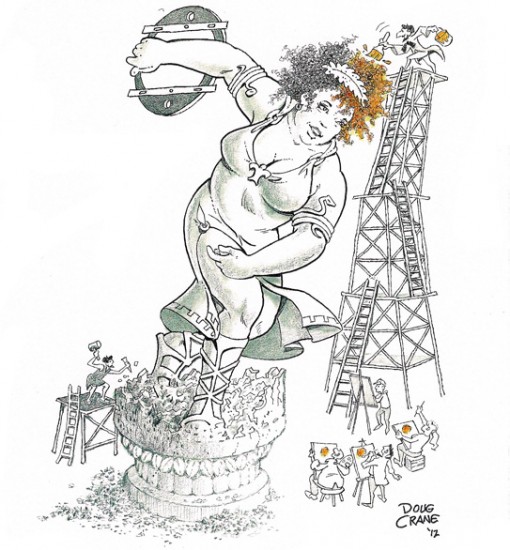
Casey Safron: No print work around, what was your next move?
Doug Crane: Fortunately, the animation studio Terrytoons, located in New Rochelle, NY, was actively seeking new, young talent. So, in June of 1956 I found myself at an Ink and Paint Department desk, painting the transparent acetate cels that inkers in the next cubicles had traced in ink from the paper drawn images that a cleanup artist had fine tuned from an animators’ stack of rough drawings. So I never really did choose animation; It was kind of thrust upon me.
On my first day at Terrytoons, after having been briefed regarding studio procedures, protocol, rules, regulations, etc., I was assigned a seat in the “bullpen”—those long rows of side by side colorers (opaquers) along with an array of paints, pens, brushes, water jars for washing brushes, etc. A few moments later, another rookie was escorted to the seat next to mine, a cute little freckle-faced lassie with long reddish hair and a great smile, who introduced herself as Maureen.
“If you need any help,” I offered, “don’t hesitate to ask. I’ve been here a while.”
“Thanks,” she said. “When did you start?” When I told her, “Fifteen minutes ago,” she roared laughing…This past June 20th, Maureen and I celebrated our 53rd wedding anniversary!!
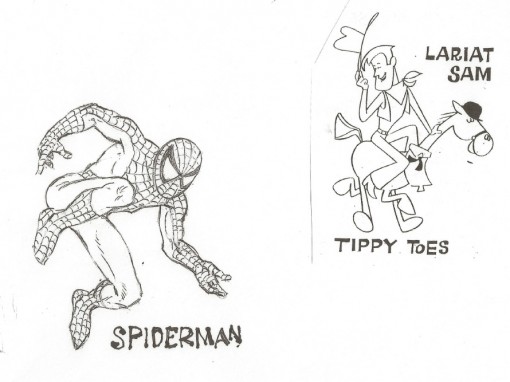
Casey Safron: Did you meet Paul Terry in person?
Doug Crane: Paul Terry had sold Terrytoons to CBS in January of ’56, so when I got there in June, he was long gone. I did get to see him three or four times when he’d stop in to say hello. I think he had a hard time letting go of his “baby.”
Casey Safron: So how did you work your way through the Terrytoons ranks, transitioning from colorist to animator?
Doug Crane: Regardless of one’s artistic abilities, they’d begin at Terry’s as a colorist. If one displayed proficiency with a pen and brush, there was a fair chance that they would eventually attain the rank of “Inker!” I inked (with pen) the entire Bob Blechman film The Juggler of Our Lady, which premiered at the Radio City Music Hall. For the next year or so, we inked dozens of Terrytoons “New Look” films.
During my early years at Terrytoons, a major studio shift occurred. There already was a solid team of directors: Connie Rasinski, Dave Tendlar, Bob Kuwahara, Artie Bartsch, Manny Davis and the outstanding, funniest guy of all, Jim Tyer. Adding to the talent already there, we saw the influx of a marvelously creative new breed of individuals joining the ranks as directors and designers, among them: Gene Deitch, Al Kouzel, Ray Favata, Gene Wood, Jules Pfeiffer, the aforementioned Bob Blechman and Ernie Pintoff. Many of them came from the diminished studio of UPA. This was the big step for me…I was tested, proved qualified, and was welcomed to the world of the PENCIL PEOPLE!!!
My new life as an animator was just beginning to flourish, when I got the call from America’s Uncle Sam. I looked around the studio to see who else was draft bait, and realized that six others would of course be going soon, too. So, there is a break at this point in my animation career for two long, very long years, as I put on helmet, boots and backpack, grabbed a rifle, and disappeared over the sand dunes to places far from the animation scene.
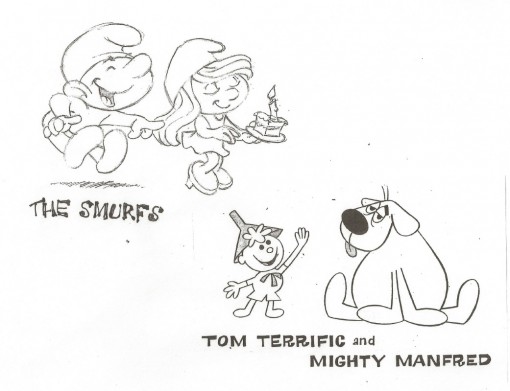
Casey Safron: So when you returned to the U.S., you went from Terrytoons to Paramount?
Doug Crane: Paramount Pictures called and I found myself animating under the leadership of master animator Shamus Culhane, the man who years before had so marvelously animated the seven dwarfs toiling in the diamond mine, while singing the unforgettable “Heigh-Ho, Heigh-Ho.” And so it was at Paramount, in 1967, that we animated the enormously popular animated Spiderman original series.
Casey Safron: What came after Paramount?
Doug Crane: TV commercial production was big in New York. There were 59 small and medium-sized animation studios listed in the NYAnimation Local 841 newsletter, and I think I worked in 50 percent of them at one time or another. I was called in one day to a highly respected studio, Perpetual Motion Pictures, to animate a spot for The Wall Street Journal. The project was to be a sophisticated film, fully animated, which called for “morphing” from content to content, so actually the full minute film would be one scene, continuously transforming. It was one of those ”This can’t be done. Now, let’s get started!!!” challenges. The film went on to win the ASIFA award and I ended up at the studio for more than two years, animating the Campbell Soup Kids, Burger King, the Exxon Tiger and dozens more.
ZAP (Zander’s Animation Parlour) was a great place to work. I was with Jack Zander for three years, and petty much enjoyed every minute of that time, while learning much from the master! Jack was responsible for the early Tom and Jerry animations, and had a definite flair for directing a spot. He was a stickler for clarity and precision and timing. Make sure the audience knows exactly what you are trying to portray, and do it with precise timing. Jack never said, “Doug works for me.” It was, “We work together.”
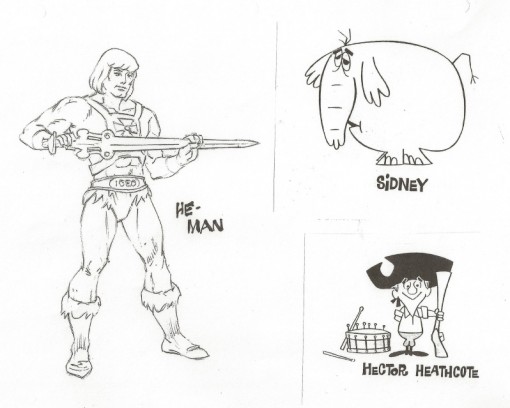
Casey Safron: You’ve worked on the West Coast on occasion?
Doug Crane: Yes, I have worked there. First time was with fellow New Yorker Red Augustson, he of Fleischer/Famous studios. We were invited to Hanna-Barbera, where we worked on The Super Friends and The Flintstones. After a few months we were summoned to Bill Hanna’s office. He was pleased with our work and wondered if we knew any NY animators who might be available to fill an H-B manpower shortage. I said “I think maybe…” and began counting on my fingers, mumbling some names and numbers… “At least 20,” I said. “Well now,” he smiled, “How would you boys like to go back East and operate a Hanna-Barbera East studio? We’ll set you up, and handle all the financial shenanigans…you handle the Quality and Quantity of the artwork.” Red and I sat in Bill’s office during the following Monday thru Thursday, learning the methods and problem solving involved with a studio…basically a “THIS is how H and B does it.” On Friday we flew home and for the next year and a half, we ran H-B East, and kept from 18 to 23 animators busy, busy, busy!!!
Casey Safron: Any favorite feature films you’ve worked on?
Doug Crane: I guess we want to mention Heavy Metal…that was completely different from anything I’d done before. I animated a major proportion of the “Harry Canyon” sequence and maybe 20 percent of the “Den” segment.
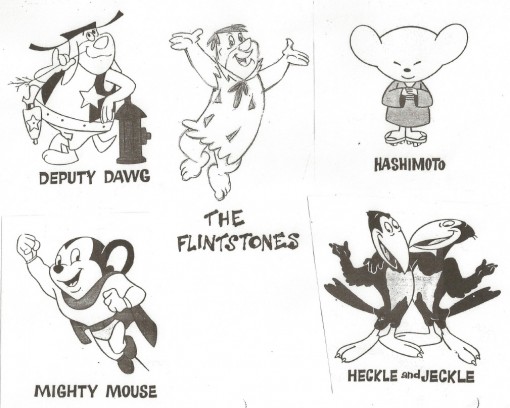
Casey Safron: That’s awesome, what was it like working on Beavis and Butt-head Do America?
Doug Crane: I thought Heavy Metal was the most unique film I’d ever worked on—and it WAS up to then—but when I started on B&B, I realized that I hadn’t seen nuthin’ yet!! The B&B Do America project was pretty well under way when I came on board, so I was only on it for a bit under a year. I did a lot on the orchestra bit and had an absolute ball on the “Hallucination” sequence. We were given a single layout, and told to do something wacky with it…free reins!!
Casey Safron: Of all the places you’ve worked, what are some of your favorite memories?
Doug Crane: Well, for one, it’d have to be Really Rosie with Maurice Sendak…He wasn’t sure at that time how his work would animate, but he was very pleased with our handling of “Pierre I don’t care” and Rosie’s backyard show, when the rain comes. Zander’s version of the Gnomes was fun animating. Can’t forget Chris Prynoski’s Downtown. Each of the series were worthwhile pieces… Hanna/Barbera’s Fish Police was wonderful, as was their The Pirates of Dark Water…seems like I enjoyed working on everything!! I think the Wall Street Journal ad was my greatest challenge (and success).
Casey Safron: Quite a resume, Doug – thank you so much for joining us and we’ll see you at this summer’s Animation Block Party!
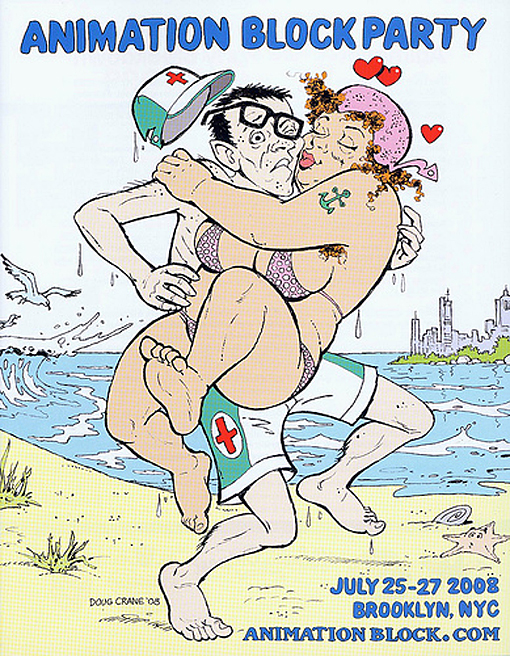



 Win a Funko X Lilo & Stitch Prize Pack!
Win a Funko X Lilo & Stitch Prize Pack!

